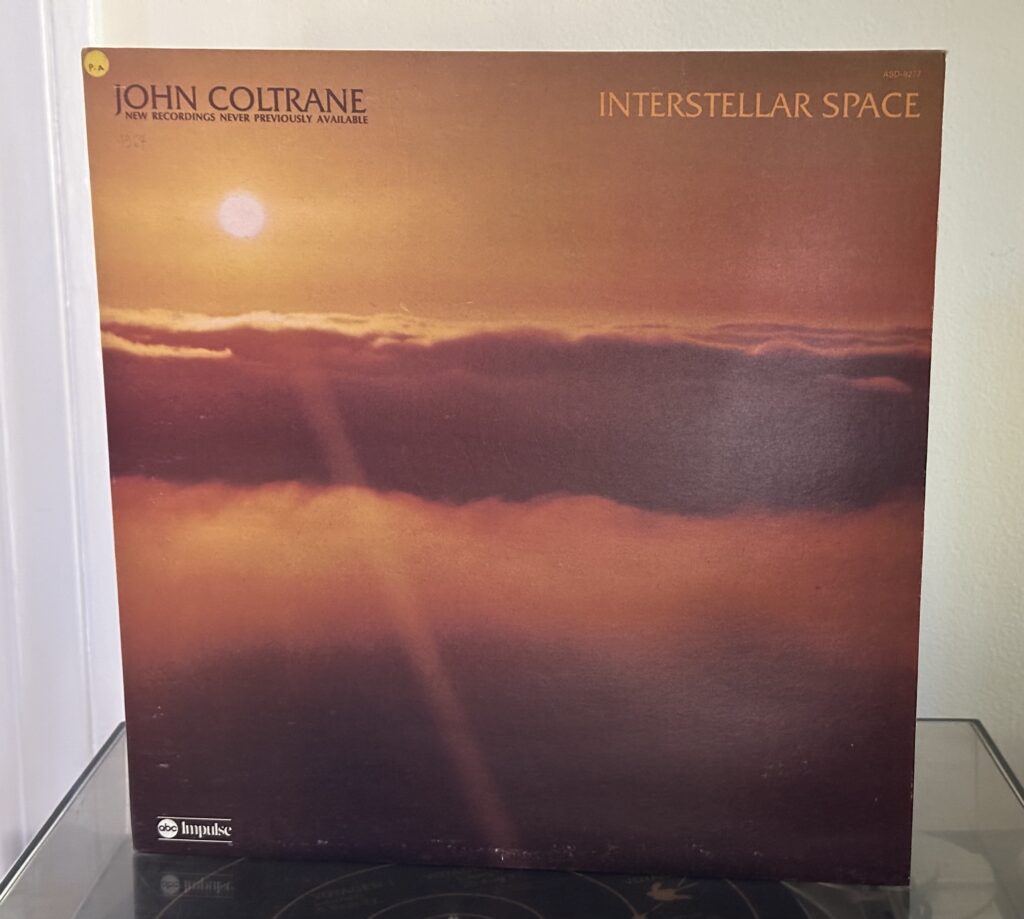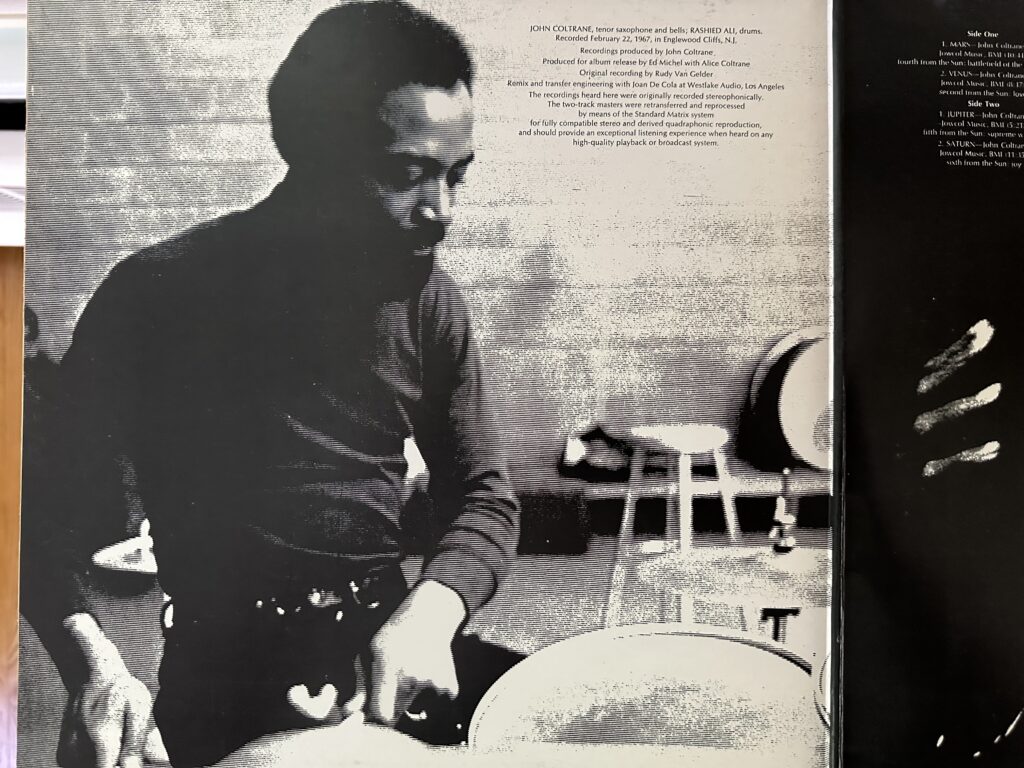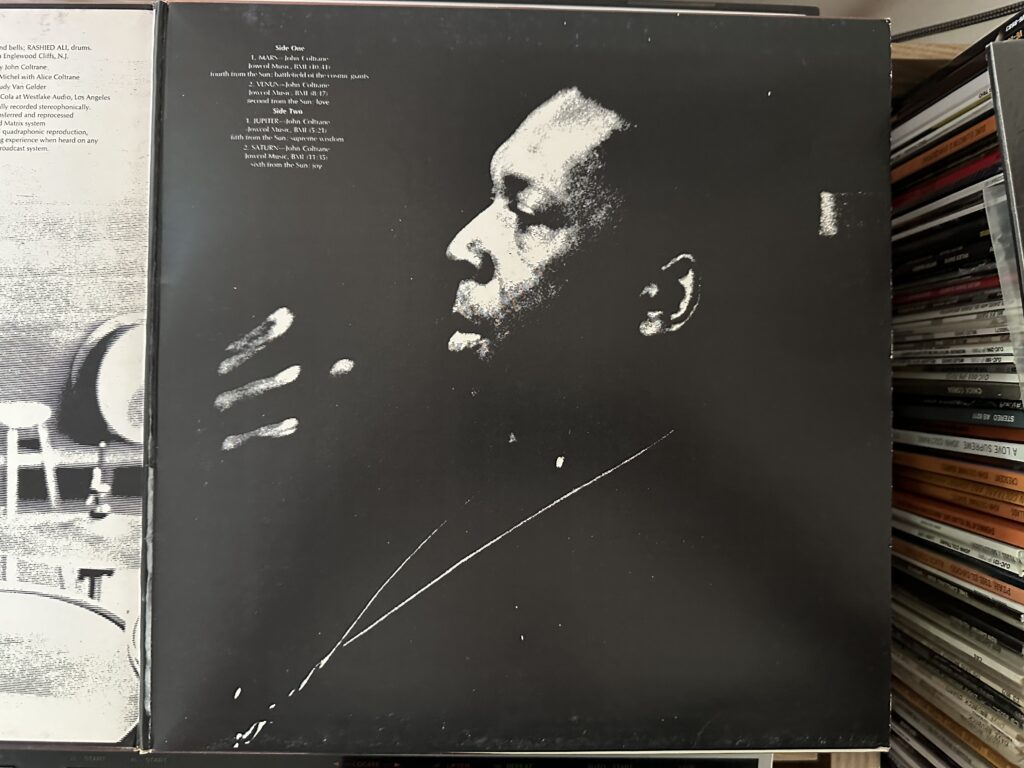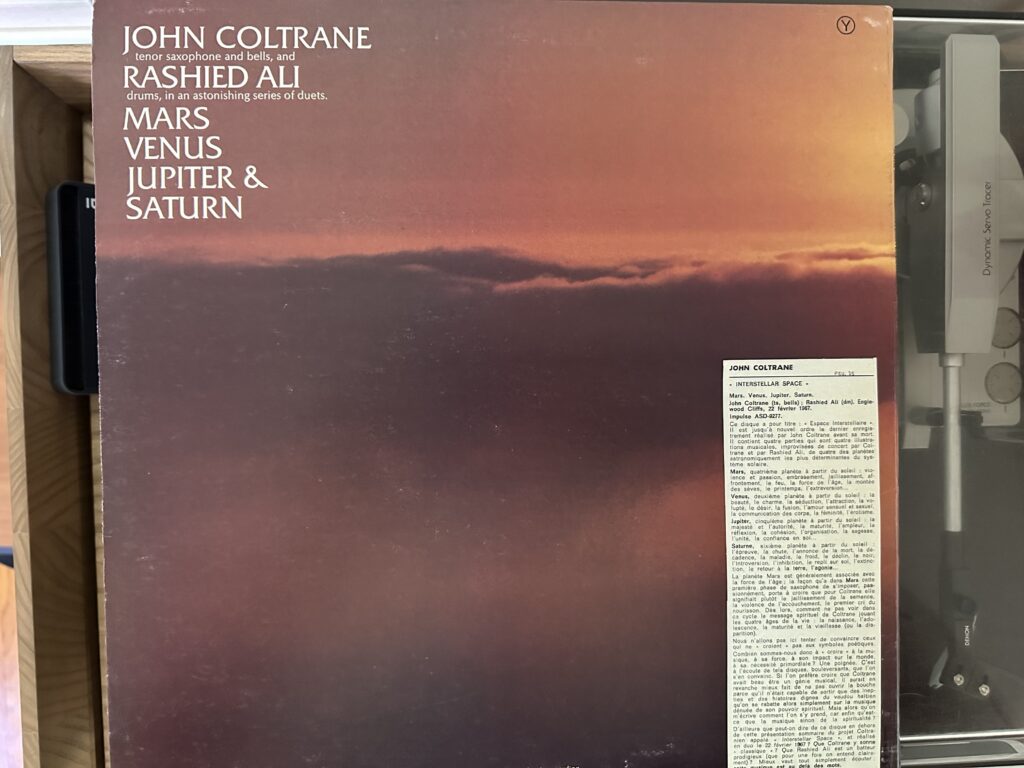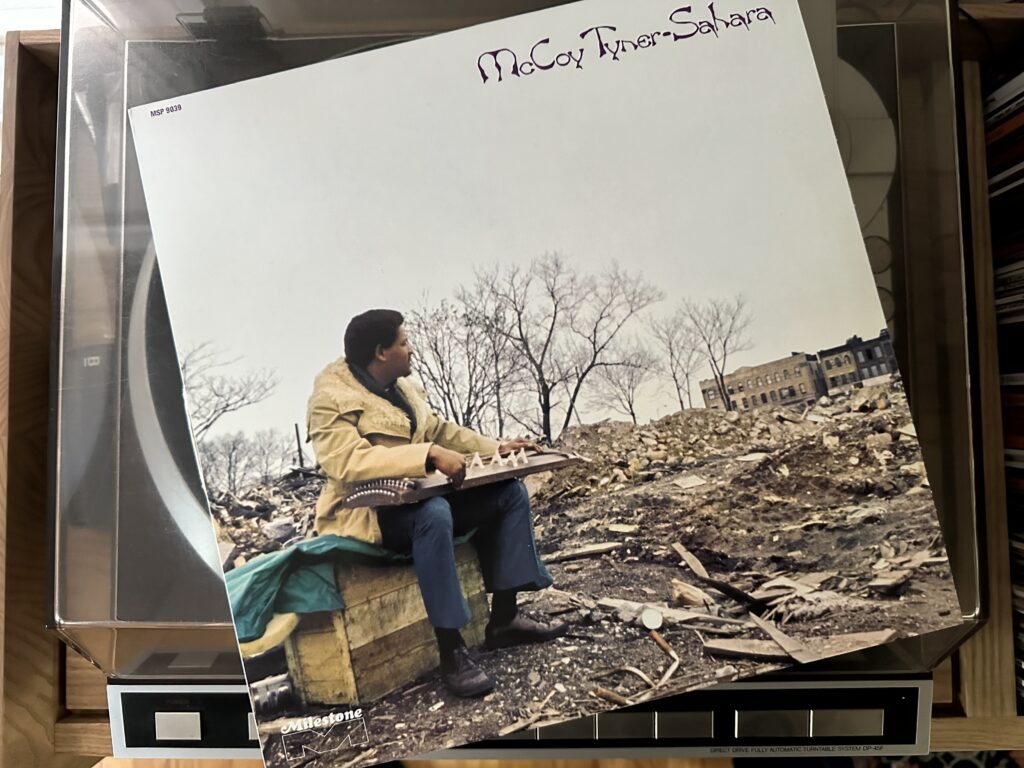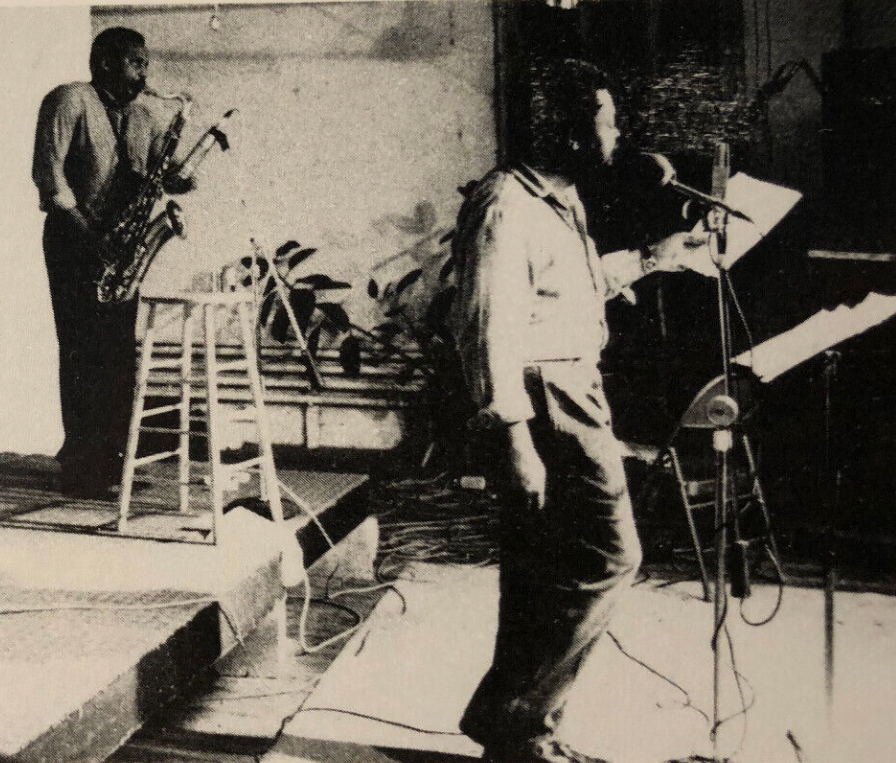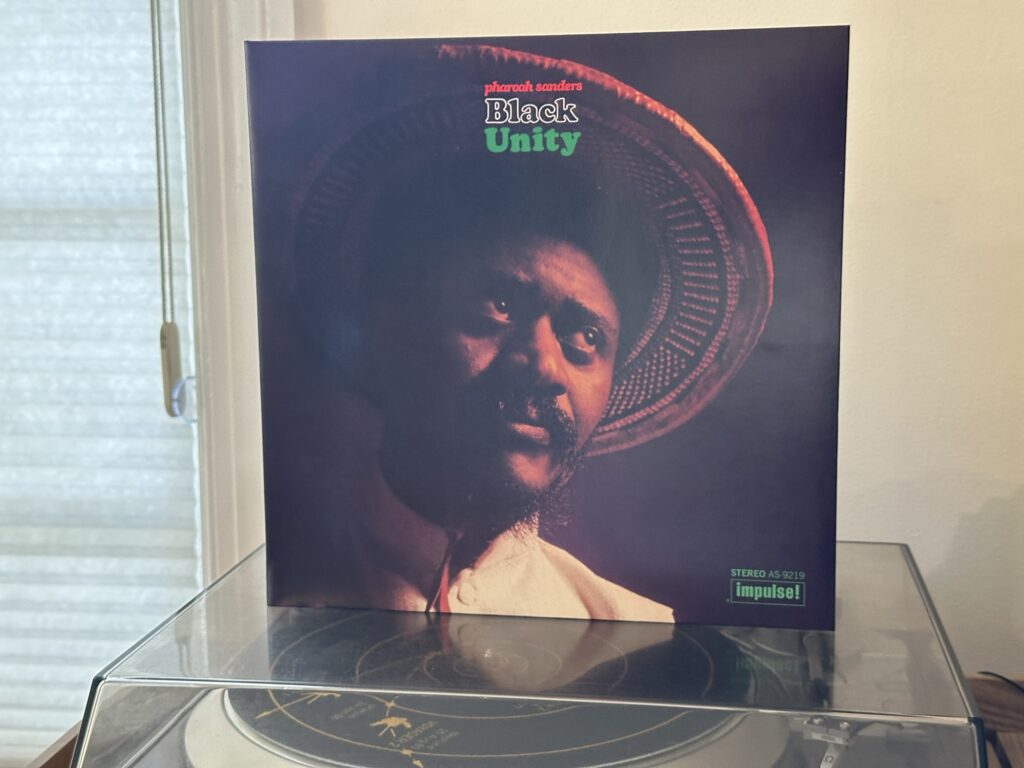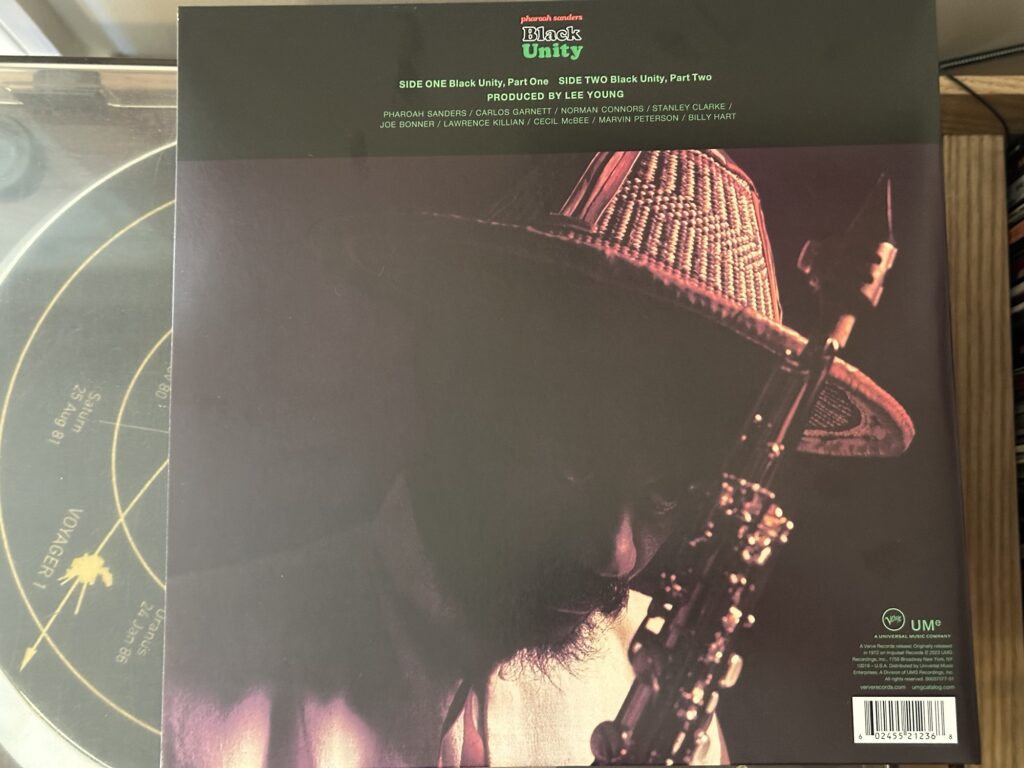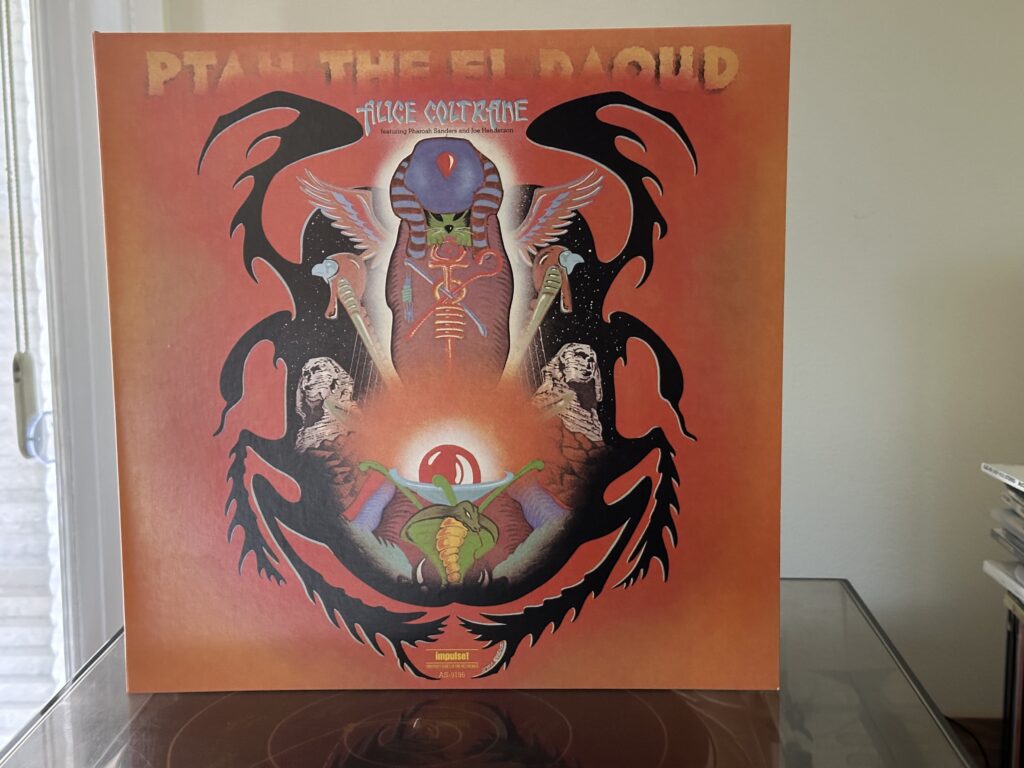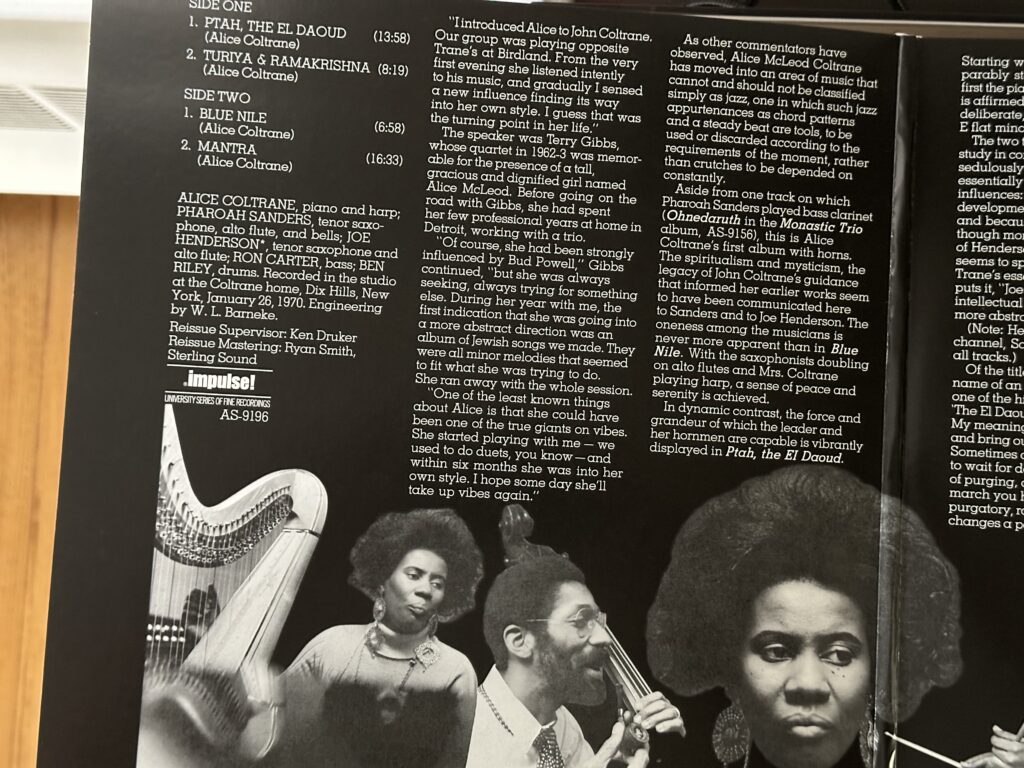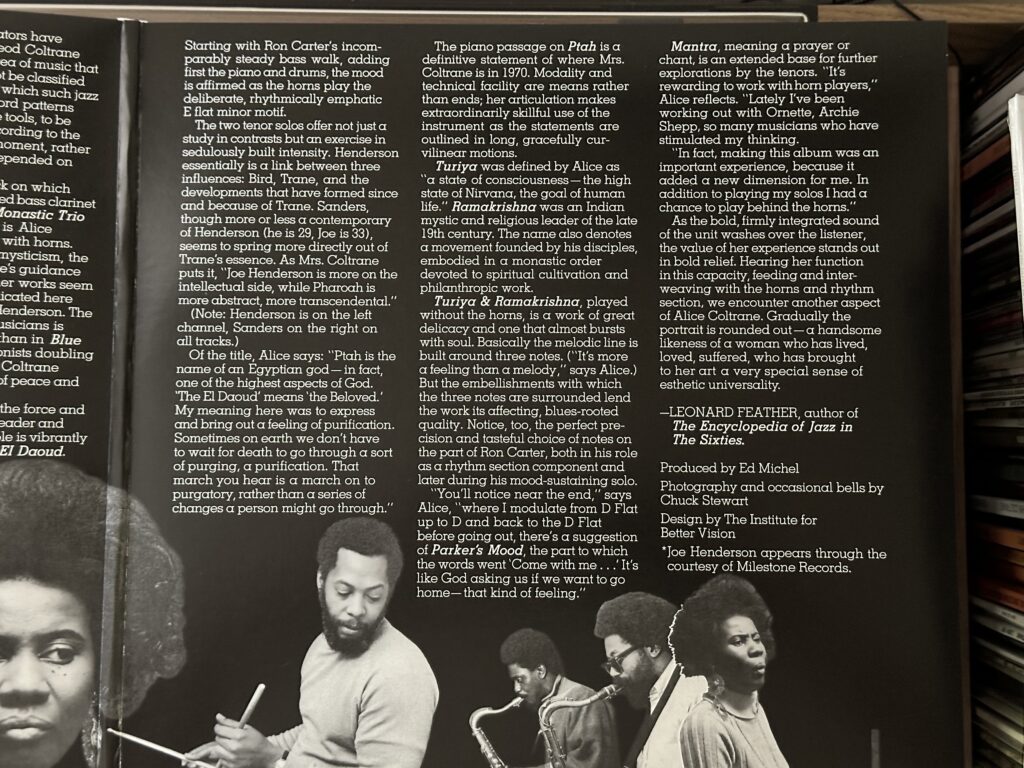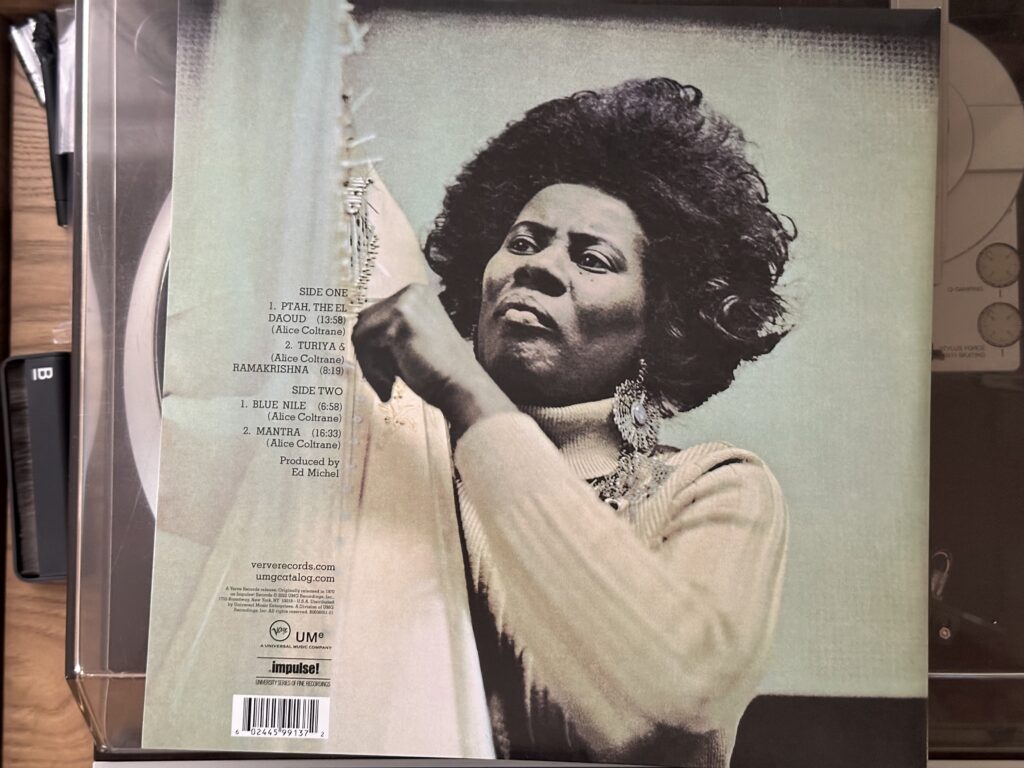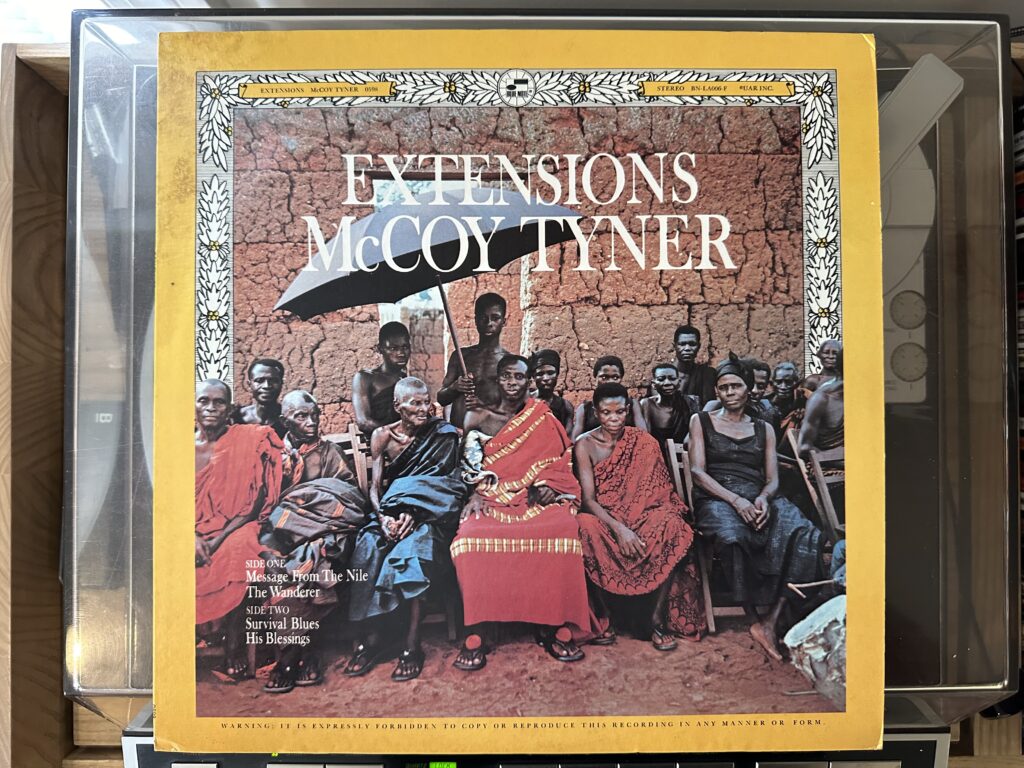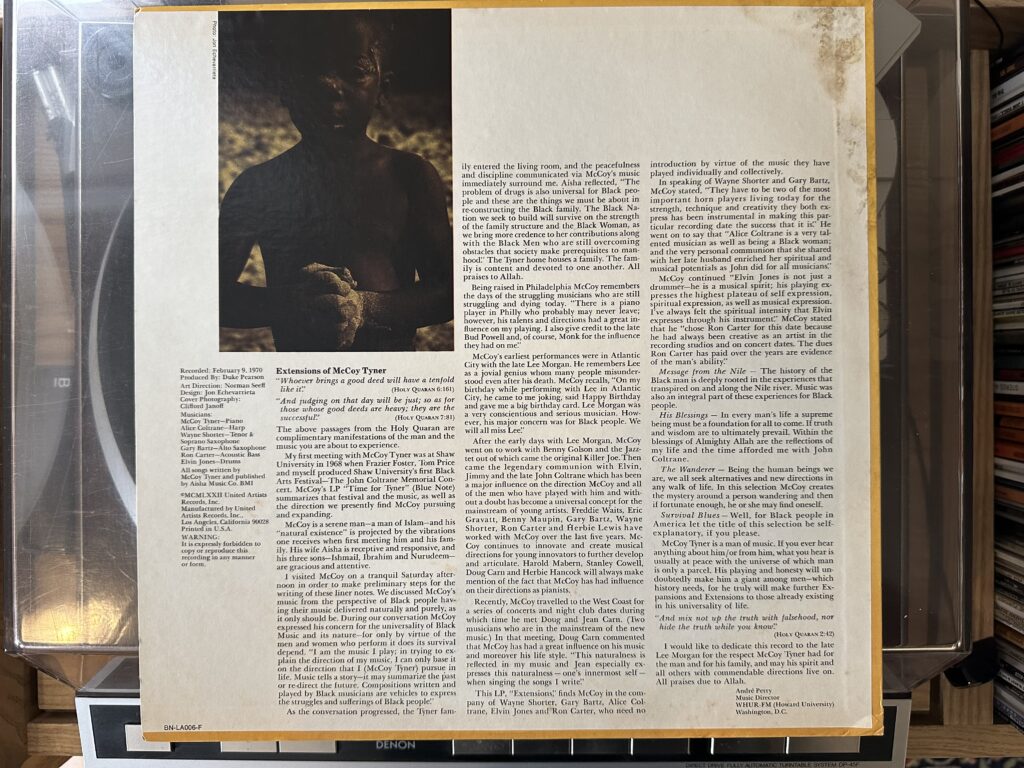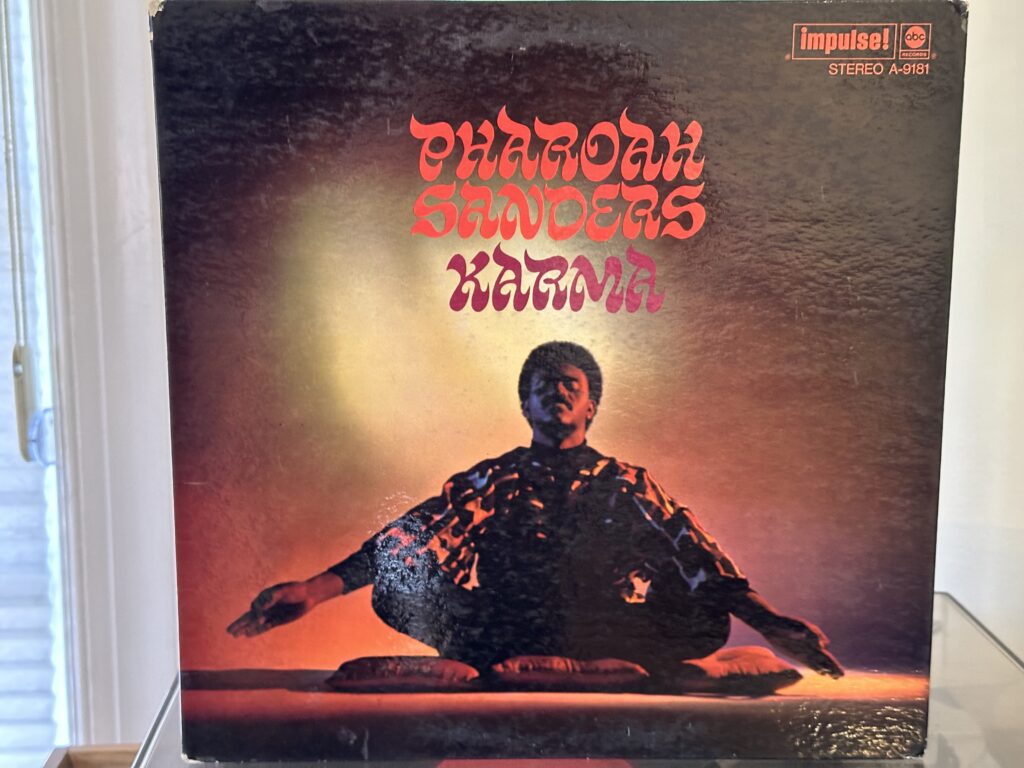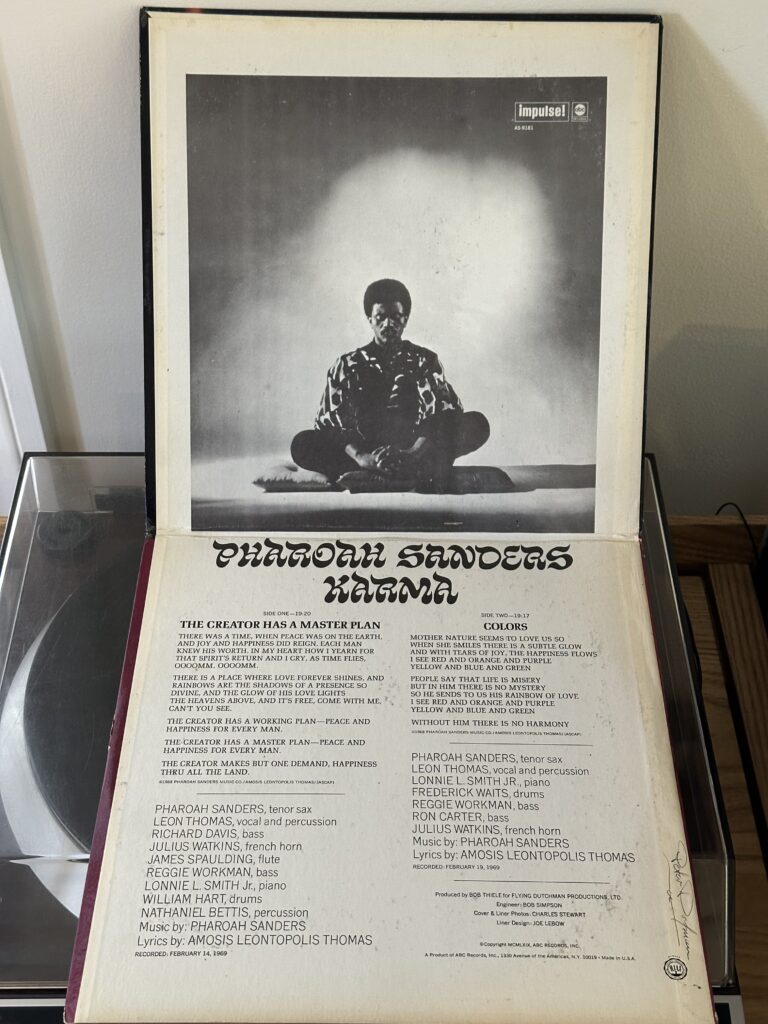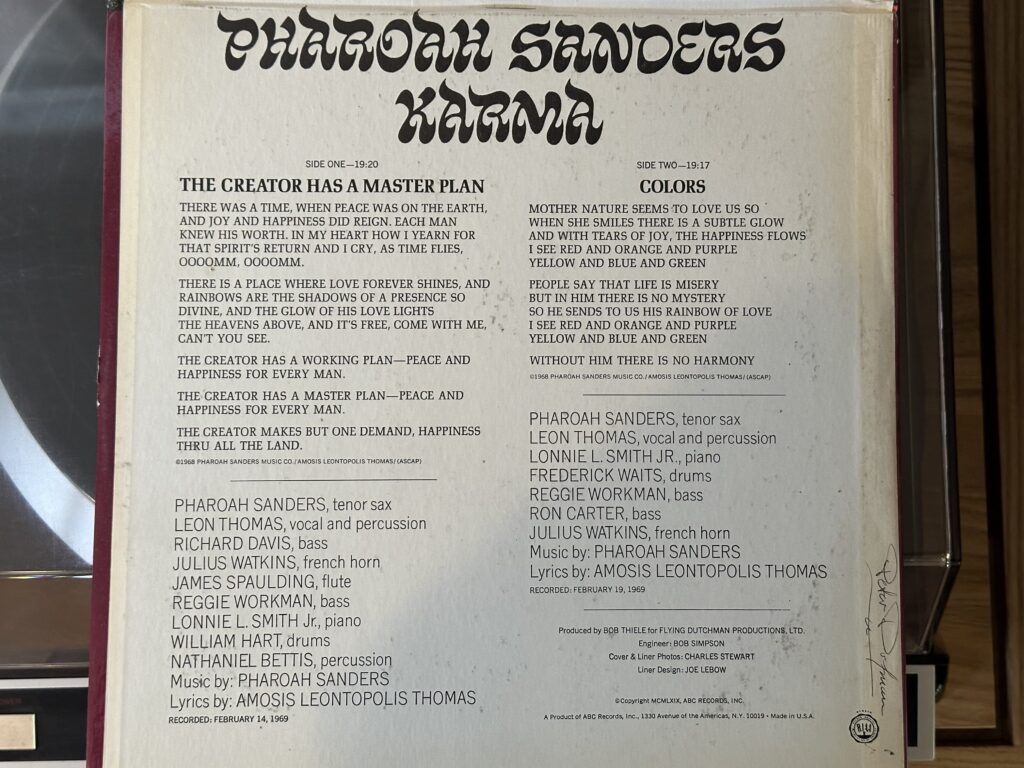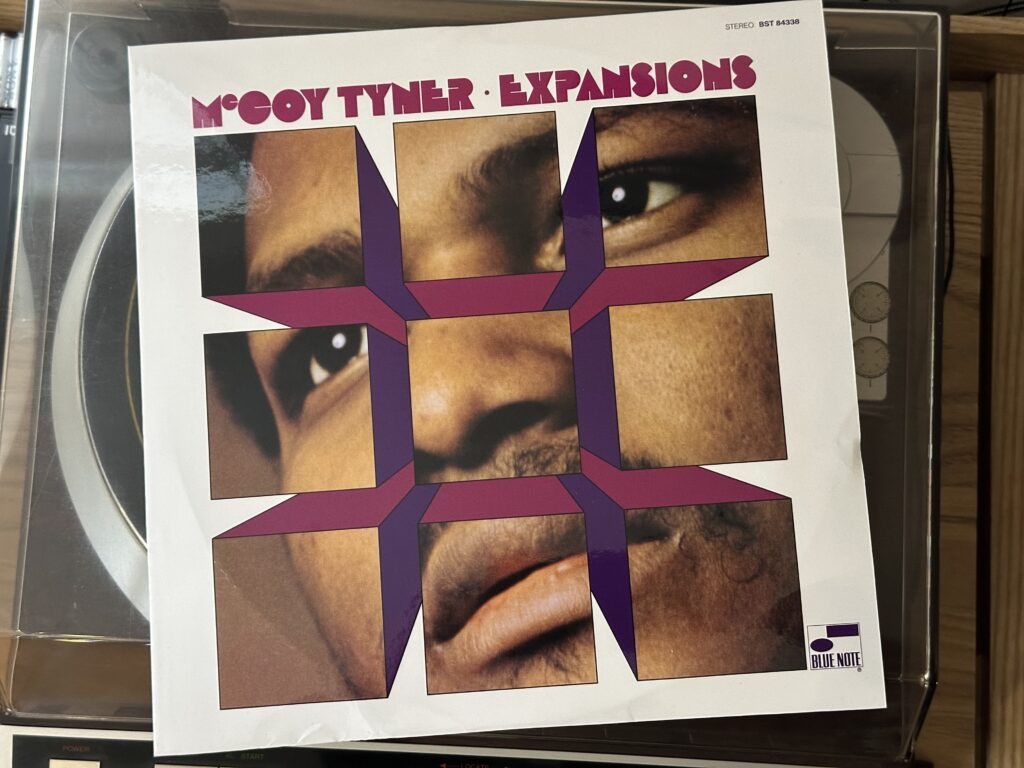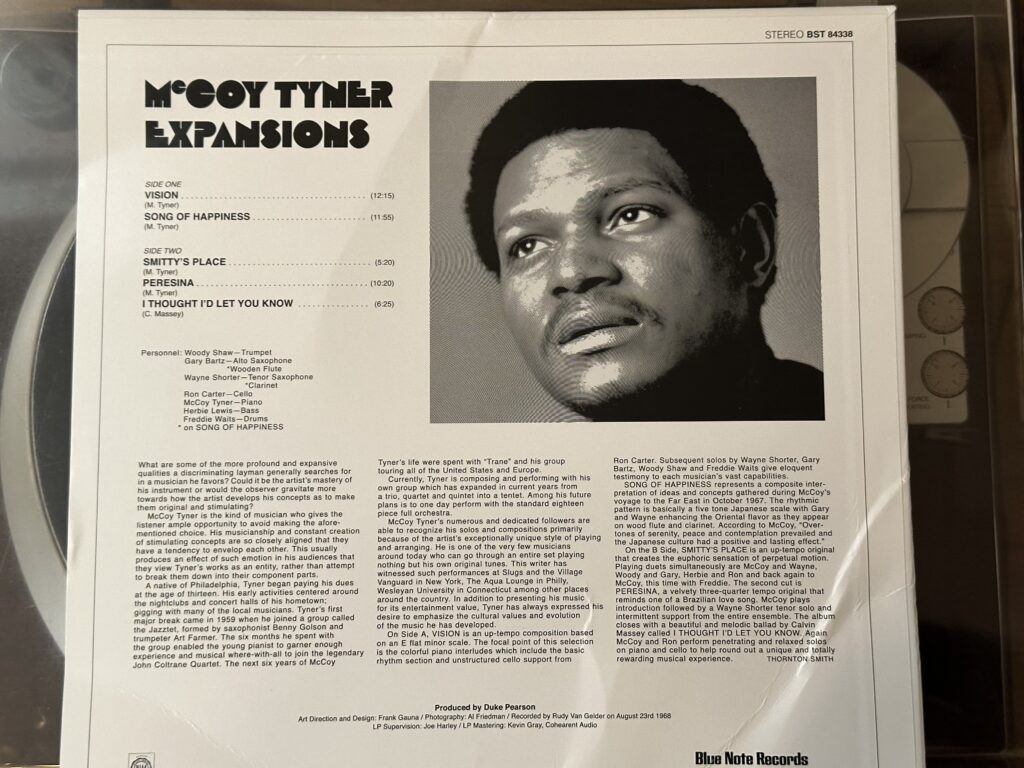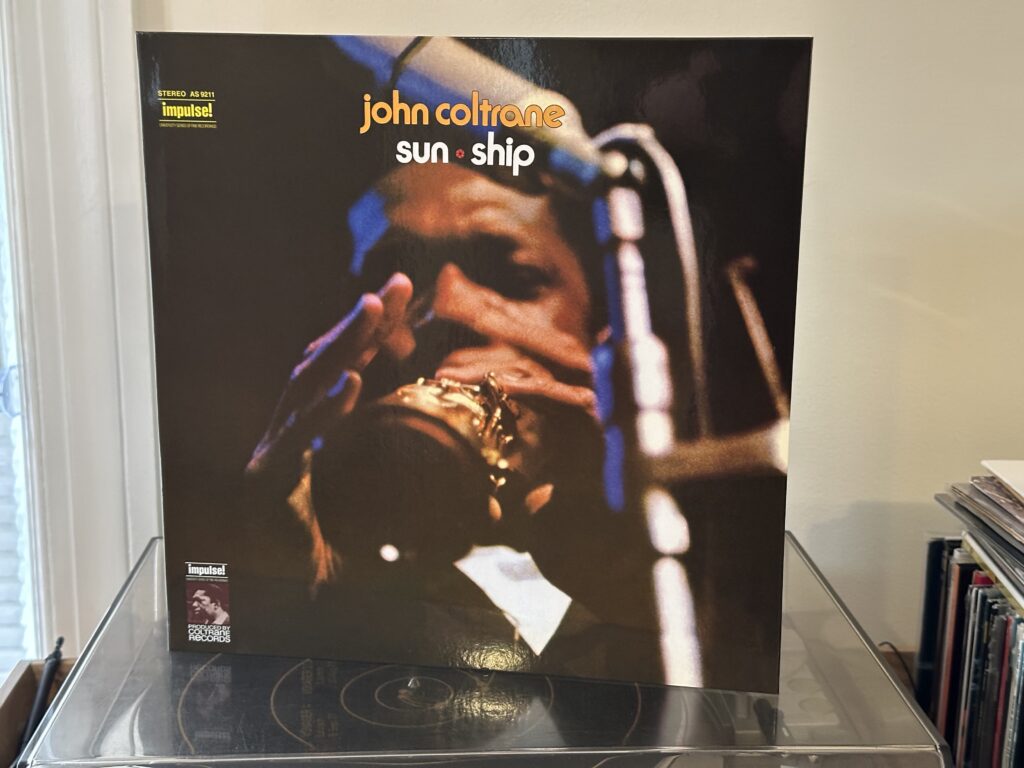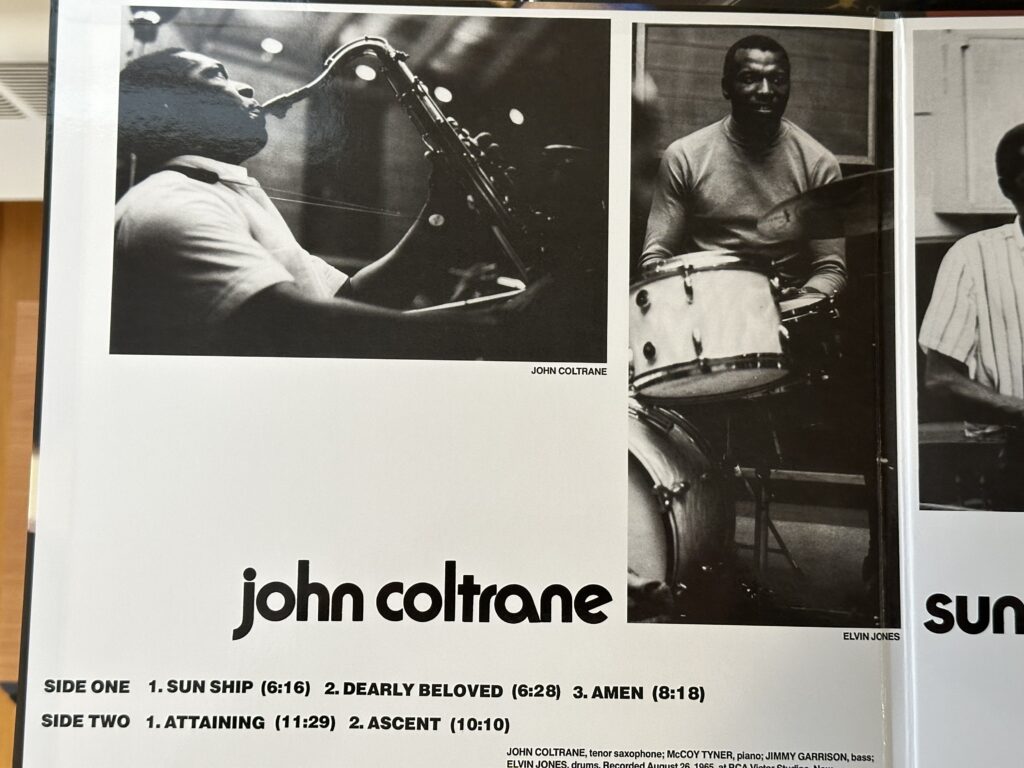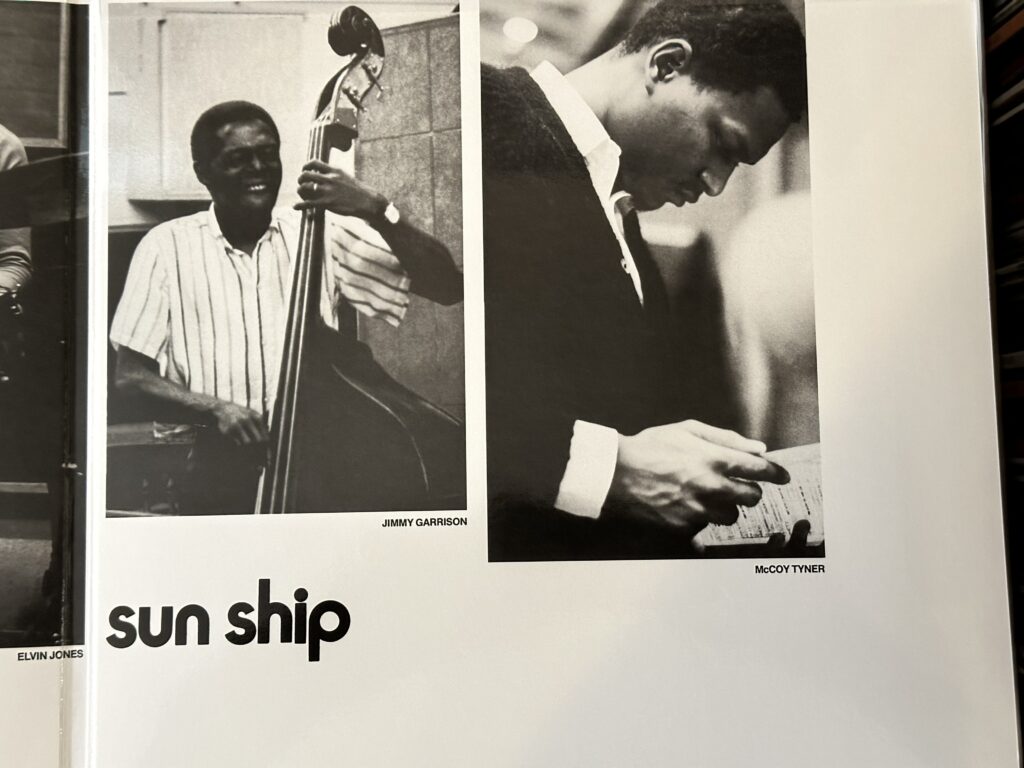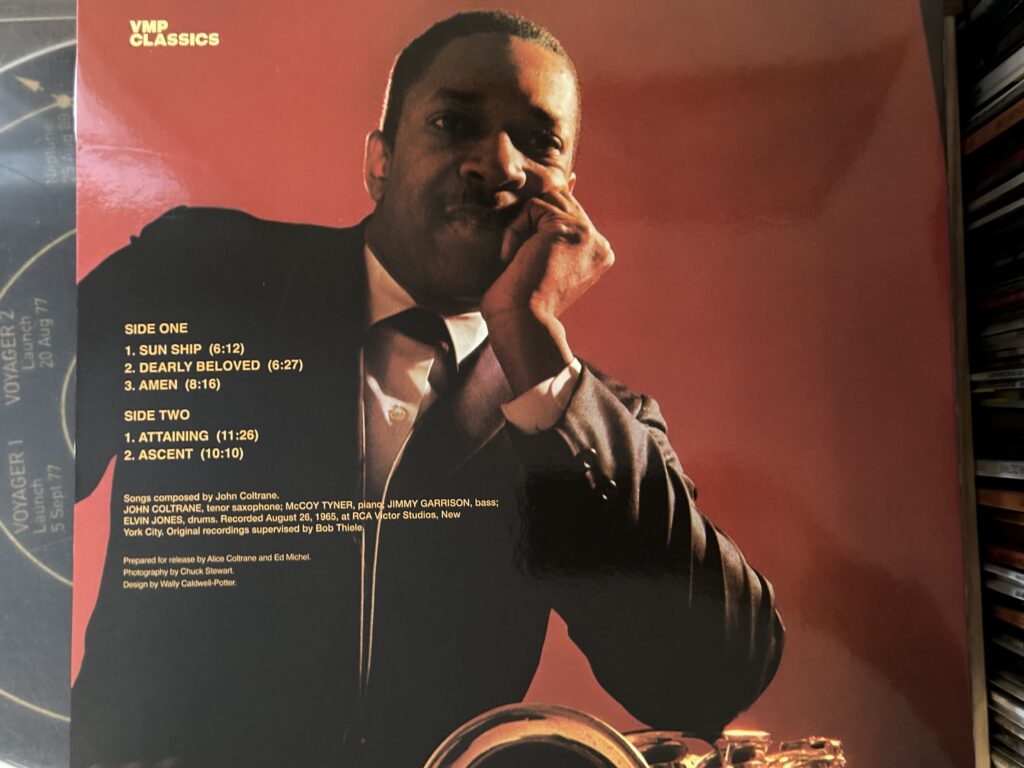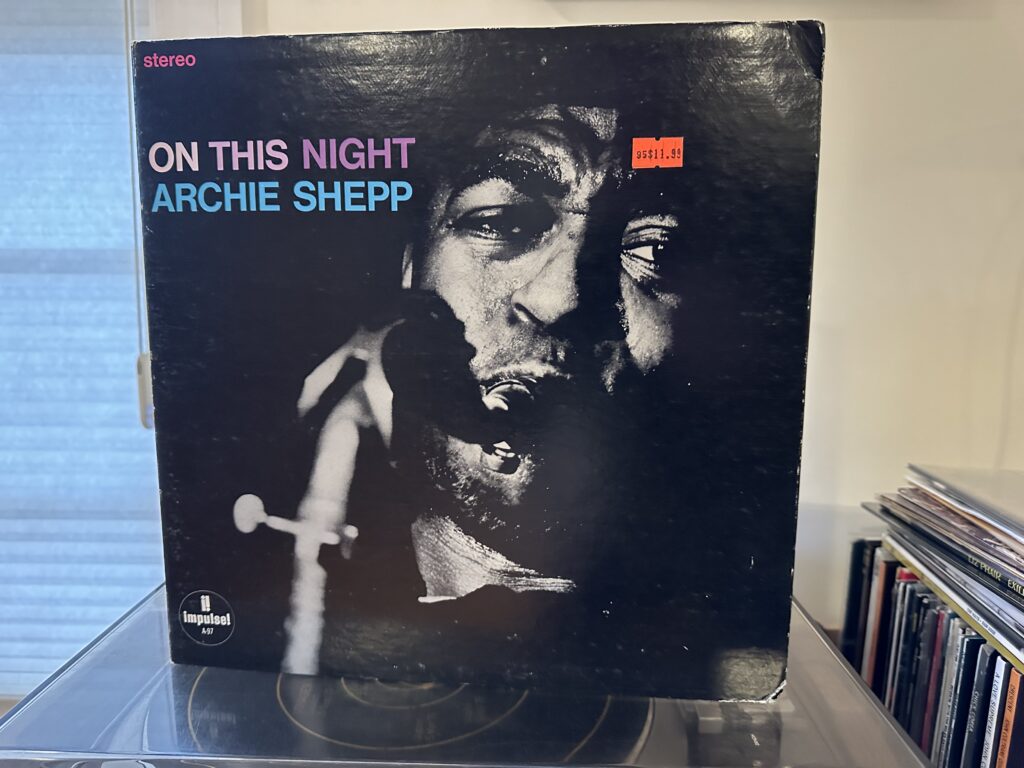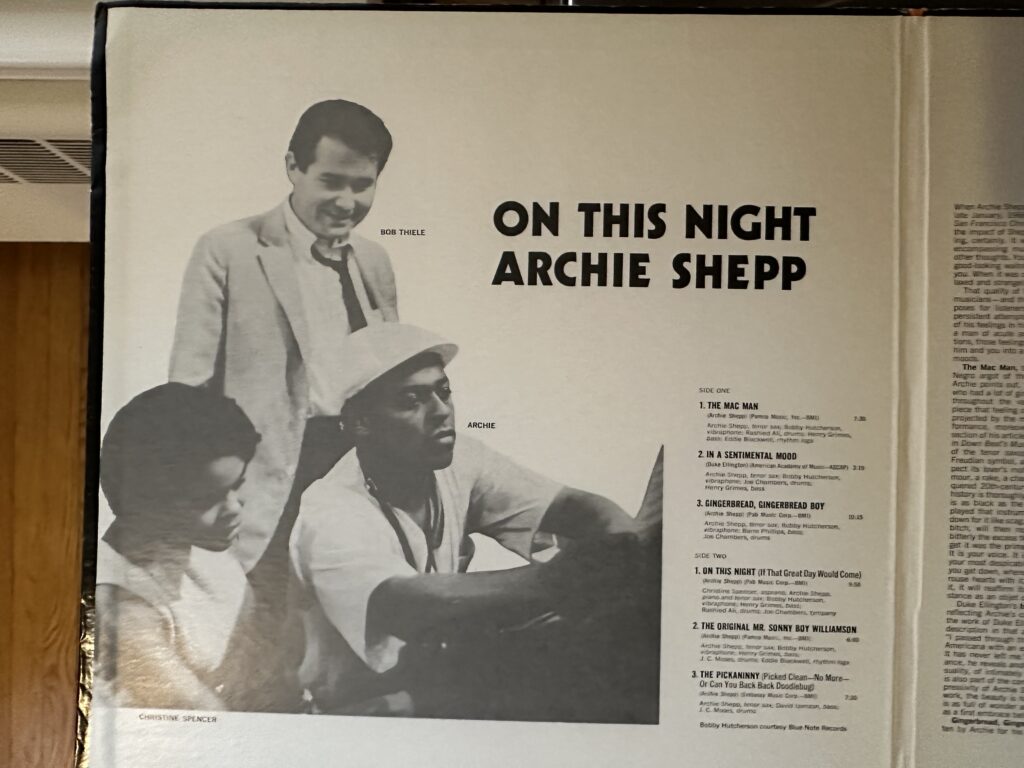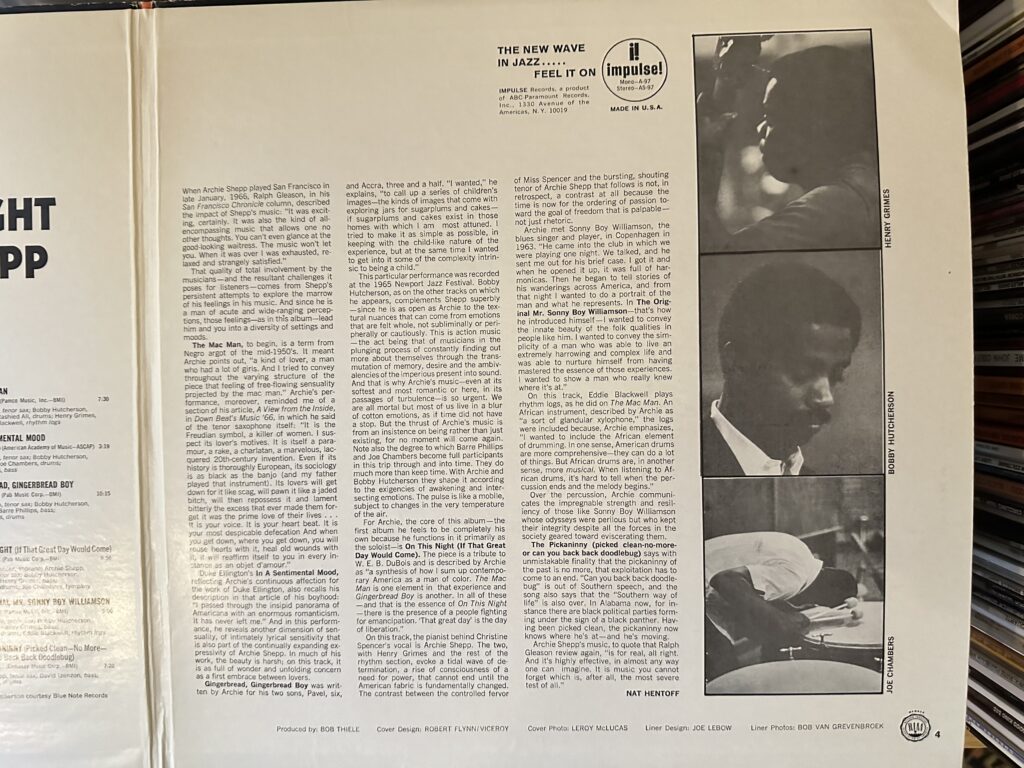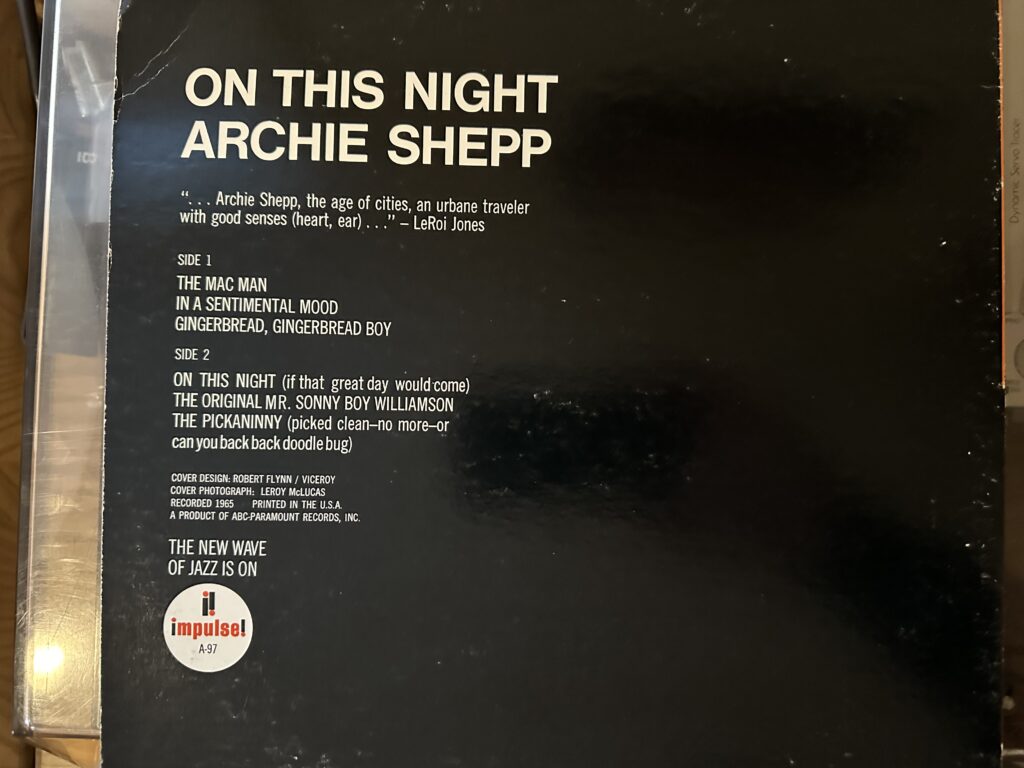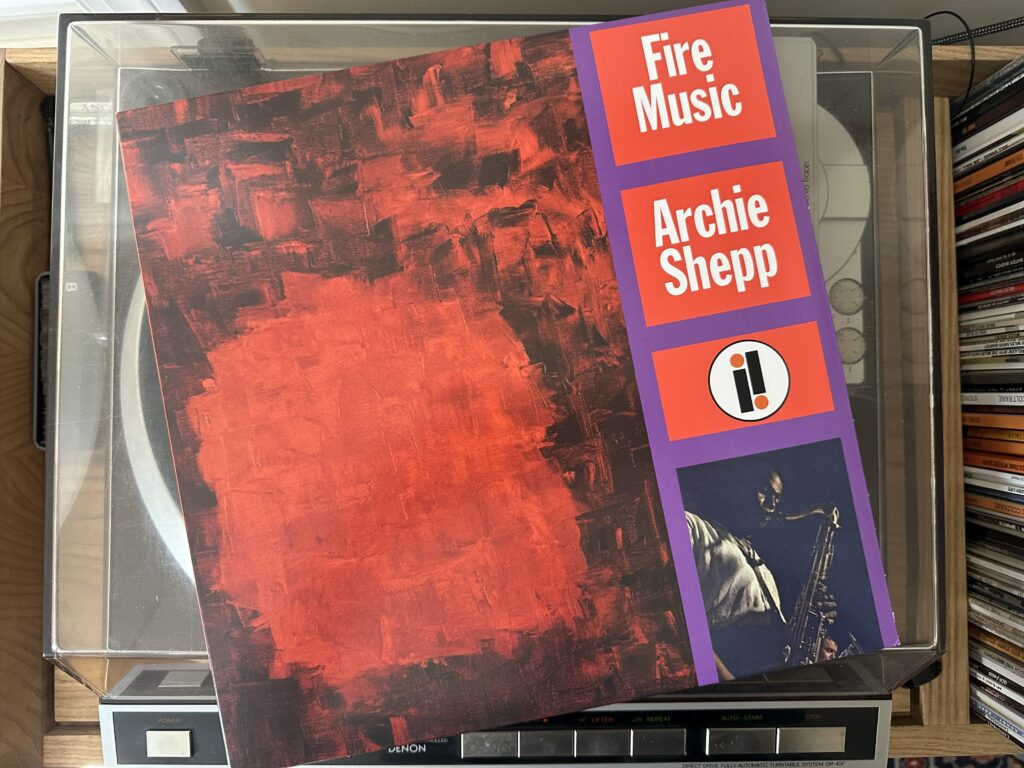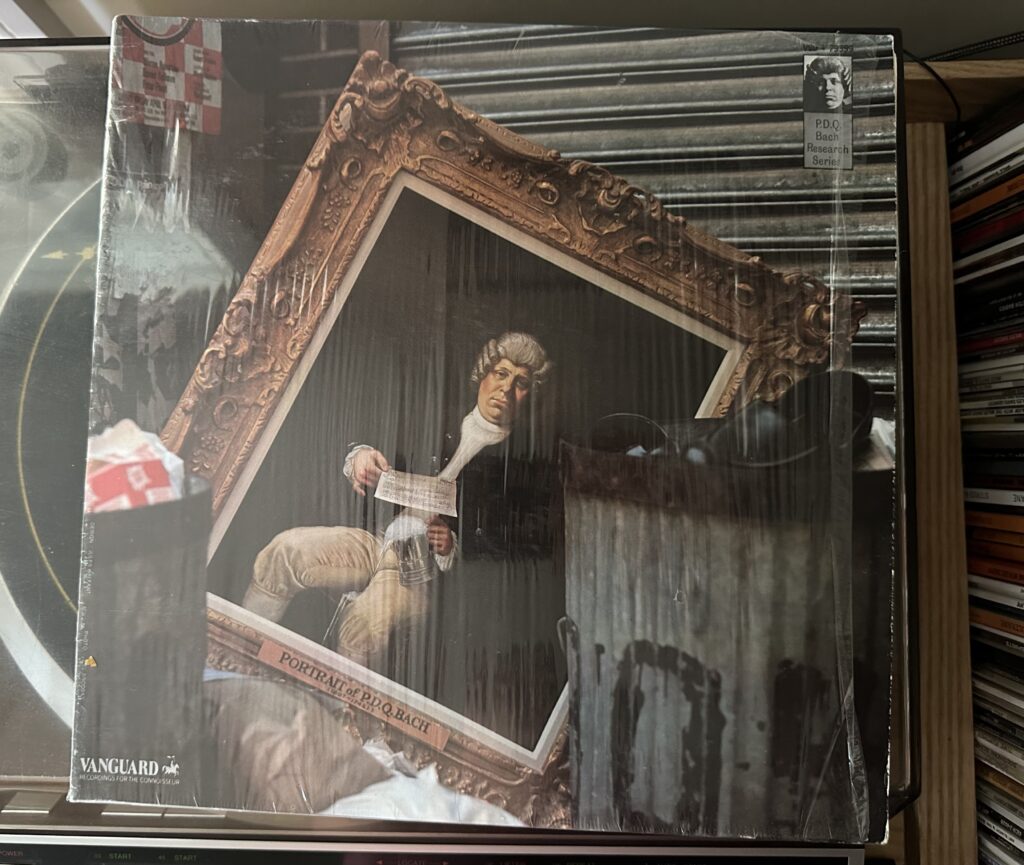
Album of the Week, June 1, 2024
I meant for there to be a trilogy of P.D.Q. Bach reviews and knew that I would come back to the last record in my collection when the time was right. Now, five months later, having finished the Coltrane series, I return to my P.D.Q. Bach records only to find that they’ve multiplied in the interim. So the series becomes a quartet. I’m not sad about it, though, because Portrait of P.D.Q. Bach was the first of the great(?) composer’s albums I ever heard, at the tender age of about six or seven.
Our family affinity for this particular album was almost certainly due to the musical contents: a full album of choral music. My background in choral music was seemingly predestined, since my parents were both directing church choirs when they met at a music and worship conference at Montreat, and I ended up singing in the church choir alongside them by the time I was in high school. So we were primed for the utter silliness of the P.D.Q. musical lens applied to the latent silliness that lurked beneath the seriousness of sacred choral music.
We were also primed for the visual humor on the jacket. The “portrait,” shown in the garbage outside a New York City restaurant from which it was “rescued,” is of course the same image used on The Definitive Biography of P.D.Q. Bach, published the year before. And the back jacket photo, showing Schickele demonstrating how to play organ music on the piano, with his bare toes performing the pedal notes on the keyboard, is unforgettable. I should know; I’ve been trying to forget it for over 40 years.
As he did for many of the 1970s P.D.Q. albums, discoverer and impresario Peter Schickele introduces each of the works in turn, beginning with the Missa Hilarious (S. N2O). The mass begins, as is traditional, with a Kyrie, though here sung in Pig Latin as “Yriekay.” The music begins as a parody of baroque mass settings, but following the Christe, the reprise of the Kyrie is sung as a parody of “K-k-k-Katy.”
The “Gloria,” sung as a duet—or maybe more accurately, a hand-off—between basso blotto Harris Poor and bargain counter-tenor John Ferrante incorporates bits of West Side Story and “Laugh-In” in one neat little bundle. It leads into the “Credo,” which begins as a fugue that progresses from Credo to Cre-so to Cre-le to Cre-fa as the fugue subject progresses around the scale. There follows a very funny, very weird solo by Ferrante, accompanied by the “corrugahorn,” a piece of corrugated tubing that serves as an odd wind instrument. As this is the only substantial text in the piece, I reproduce it here: “Et in spirito inner sanctum, et in spirit gum inner sanc-Tums, et in Spiro Agnew.”
The “Sanctus” features an extended introduction on odd reeds and a parody of the “Hare Krishna” from Hair, with a little “ho-jo-to-yo” thrown in. To say there is something for everyone in this movement is an understatement. Maybe it’s more accurate to say there’s at least one thing in this movement for everyone to grimace at. It’s also the only movement that has no significant part for the chorus.
I blame the final movement of the Missa, “Angus Dei,” for my tendency even still to misspell the Agnus Dei in normal masses. But the work’s cockeyed take on the text, sung to a variation of the “Hallelujah Chorus”—“Angus Dei! Angus Dei! She looks so nice just standing there/All covered with the dew! Angus Dei! Angus Dei! She’s the prettiest cow I’ve ever seen and I have seen a few!”—redefines “commitment to the bit.” Add in interpolations of the Batman theme and you have something that still brings me almost to tears laughing. Ultimately it’s no wonder that, as Schickele claims during the introduction, that not only was the Missa Hilarious the reason for P.D.Q.’s excommunication, but that he became the only composer to have all his works placed on the Index by the Vatican.
“Eine Kleine Nichtmusik” is the one work on the album for which Schickele claims compositional credit. A purely orchestral pastiche, it incorporates so many different classical works over top (literally—look at the score in the linked video above) Mozart’s classic work that it can become a party game of “Name That Sample.”
The “Echo Sonata for Two Unfriendly Groups of Instruments” (S. 99999999) is something of a retread from an earlier P.D.Q. recording, Report from Hoople: P.D.Q. Bach on the Air. However, where the earlier recording leaned heavily on tape manipulation and sound effects to achieve the humor, here Schickele wisely lets the woodwinds and brass fight it out among themselves.
The record closes with something of a family favorite, “A Consort of Choral Christmas Carols” (S. 359). The unaccompanied performance by Duh Brooklyn Boys Chorus of “Throw the Yule Log On, Uncle John,” “O Little Town of Hackensack,” and “Good King Kong Looked Out” was among the first choral works I could sing with from beginning to end from memory, much to my parents’ chagrin. (It helped that I really did have an Uncle John.)
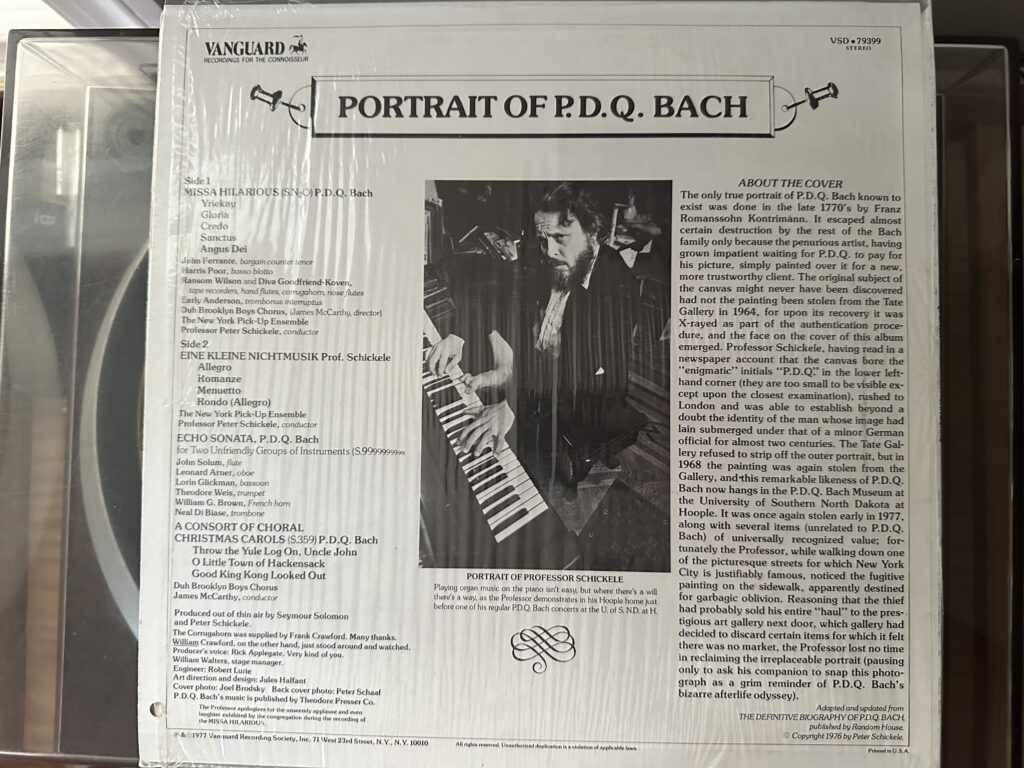
For a choral singer, Portrait of P.D.Q. Bach gives the listener something to aspire to, if only that something is making it stop. But in all seriousness, I think I could still sing most of the parts of the album by heart, and to my ear it’s one of the most consistently funny recordings in his oeuvre. Next week we’ll get a listen to the end of Schickele’s (and P.D.Q.’s) run on Vanguard Records, with another work of great plagiarism composition from the last and oddest of Johann Sebastian Bach’s twenty-odd children.
You can listen to this week’s album here:

